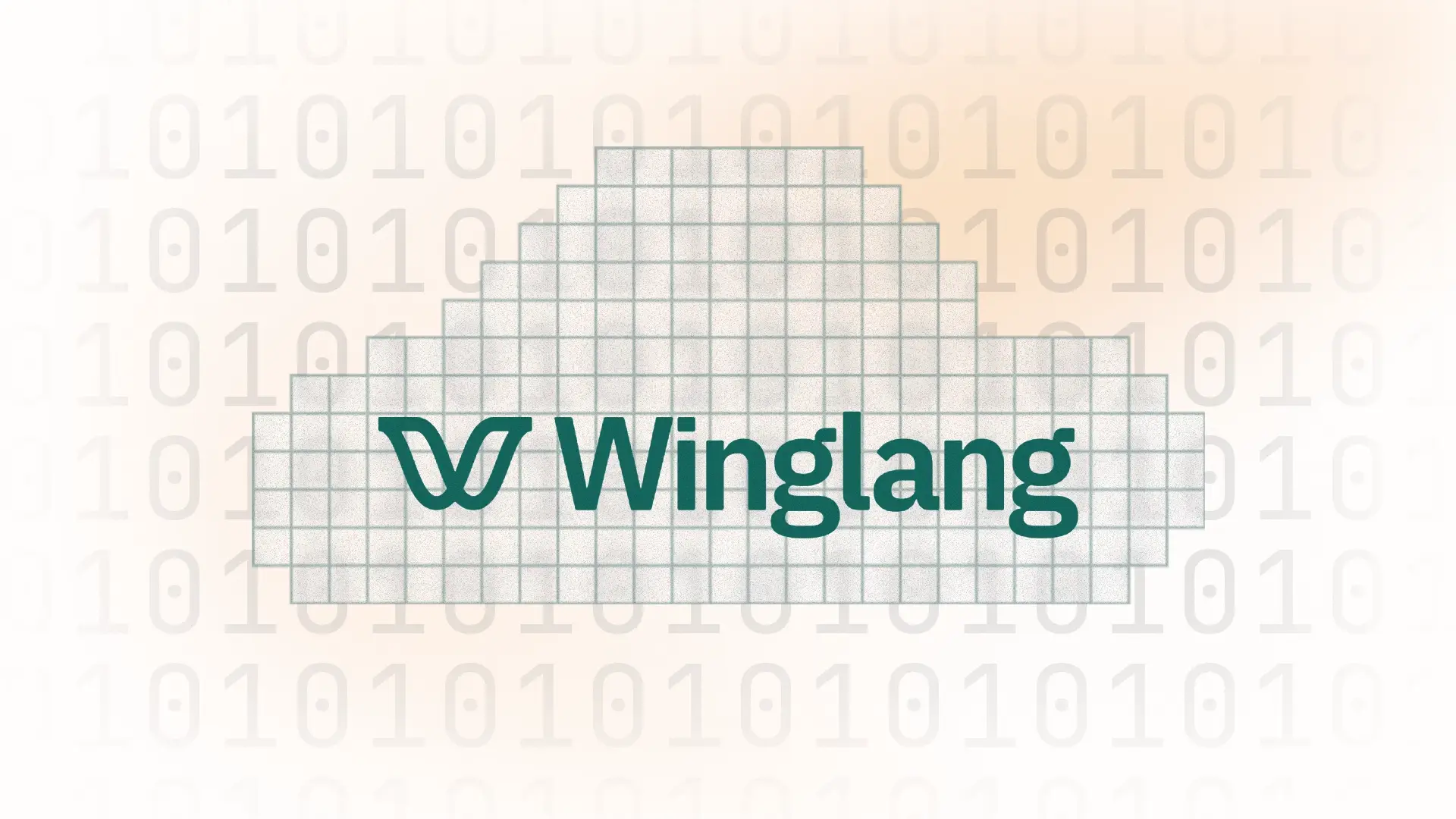Learn more about the powerful programming tool for professionals of all levels
In the digital era we live in, cloud computing has become a fundamental pillar for most businesses and software developers. With the growing need of flexible, scalable and accessible solutions, a new programming language emerges, aimed at simplifying and empowering cloud applications development: Winglang.
Developed with a focus on efficiency, simplicity and performance, Winglang aims to provide an intuitive and powerful programming experience for professionals of all skill levels. Its cloud oriented design allows developers to create, deploy and manage applications directly on the cloud infrastructure, without the need for complex or extensive configurations.
One of the key features that make Winglang so appealing is its seamless integration capability with major cloud service providers, like Amazon Web Services (AWS), Microsoft Azure and Google Cloud Platform. Developers can make the most of these platforms without having to worry about complex technical details.
Furthermore, the modular structure of Winglang makes coding and maintaining applications a more pleasant and productive task. With a wide range of built-in libraries and tools, developers can speed up the development process and ensure the quality and security of their products.
Another strength of Winglang is its focus on an active community of developers, support forums and contributions to open source code, with a language that is constantly evolving and adapting to market needs. In this article, we will delve deeper into the features, benefits and use cases of Winglang, highlighting its role as an innovative and essential tool for cloud application development in the present landscape.
Why Winglang?
In the current technological landscape, the choice of the right programming language plays a crucial role in developing an efficient and scalable software. With the growth of cloud computing and the demand for agile and robust applications, the question arises: why choose Winglang?
1. Cloud Orientation
Winglang was designed to be a cloud focused programming language. This means it seamlessly integrates with the main cloud platforms, providing developers with the ability to create and manage cloud applications efficiently and intuitively.
2. Efficiency and Performance
The syntax and modular structure of Winglang not just make coding more enjoyable, but also contribute to the efficiency of the code and the performance of the final app. With Winglang, developers can write less code to accomplish complex tasks, resulting in faster and more efficient applications.
3. Integration with Cloud Services Providers
One of the distincts advantages of Winglang, is its native integration with the leading cloud service providers, such as AWS, Azure and Google Cloud Platform. This facilitates the deployment and management of cloud applications, providing a seamless and uninterrupted development experience.
4. Active Community and Support
Winglang is not just a programming language, but a community of dedicated developers and enthusiasts. With support forums, comprehensive documentation and open source contributions, users have access to valuable resources and ongoing support for their development needs.
5. Scalability and Flexibility
Thanks to its cloud oriented architecture and best development practices, Winglang offers exceptional scalability and flexibility for growing applications. Apps developed with this tool can easily adapt to evolving user and market demands, ensuring a consistent and reliable experience.
In summary, choosing Winglang means opting for a programming language designed for the future of cloud computing, with a focus on efficiency, performance, integration and robust community support. If you are looking for a modern and powerful solution for your cloud development needs, Winglang is an excellent choice to consider.
Winglang x Terraform
In the cloud computing era, efficient infrastructure orchestration is crucial for ensuring the performance, scalability and reliability of applications. Two popular tools that address this need are Winglang and Terraform.
Let’s compare both of them, to assist you in selecting the best tool for your team and your cloud development projects.
1. Language X Infrastructure as Code
A fundamental difference between Winglang and Terraform is the approach each takes. While Winglang is a full programming language, Terraform is an Infrastructure as Code (IaC) tool, specifically designed to provision and manage resources in the cloud. Winglang offers more flexibility and programming capability, while Terraform is highly specialized in infrastructure orchestration.
2. Flexibility and Control
Winglang stands out for its flexibility and granular control over cloud infrastructure. With the ability to write custom and complex code, developers can tailor Winglang to the special needs of their application. On the other hand, Terraform offers a declarative and simplified approach, making it easier and faster to provision resources in the cloud without the need for advanced programming skills.
3. Integration and Ecosystem
Both tools offer integration with major cloud service providers, such as AWS, Azure and Google Cloud Platform. However, Terraform has a more established ecosystem and a larger community, which can be advantageous in terms of support, documentation and available plugins. On the other hand, Winglang is still growing and evolving, with the potential to expand its ecosystem over time.
4. Complexity and Learning Curve
Winglang tends to be more complex and demanding in terms of the learning curve, due to its nature as a full programming language. This can be an advantage for teams with advanced programming skills who want a high level of control over the infrastructure.
On the other hand, Terraform is known for its simplicity and ease of use, being more accessible for beginners and teams with less programming experience.
The choice between Winglang and Terraform depends on the specific needs of your project, your team’s skills and the level of control and flexibility desired in orchestrating cloud infrastructure. Both tools offer unique advantages, and the best option will be the one that aligns most closely with your cloud development goals and requirements.
Starting with Winglang: A quick guide for beginners
If you are interested in exploring the potential of Winglang for cloud development, this guide is the perfect starting point to begin using this innovative programming language.
We will walk you through the essential steps to start writing code in Winglang and make the most of its capabilities.
1. Installation of the development environment
The first step is to install a development environment required to work with Winglang. You can find detailed installation and setup instructions on the official website. Make sure to follow the steps carefully to ensure a functional working environment.
2. Writing your first code in Winglang
After setting up a development environment, it’s time to start writing code in Winglang. Create a source code file and try out some basic commands to get familiar with the language syntax. You can start with simple arithmetic operations, string manipulation or even create a basic function to practice.
3. Exploring advanced features
As you become more comfortable with the syntax and basic concepts of Winglang, it’s time to explore its advanced features. Try using features like file manipulation, integration with cloud APIs and developing more complex applications to enhance your skills and understanding of the language.
4. Using documentation and online resources
The official Winglang documentation is a valuable source of information, providing examples to guide your development learning. Additionally, you can leverage online resources such as support forums, tutorials and developer communities to get help, share knowledge and learn from other Winglang users.
5. Developing practical projects
To consolidate your learning and enhance your skills in Winglang, work on practical projects. Create simple applications, automate routine tasks, deliver cloud services or contribute to open source projects to gain hands-on experience and expand your portfolio as a developer.
Conclusion
Starting your journey with Winglang is an exciting and rewarding experience. By following these steps and dedicating time to create and explore the language’s features, you will be on the right path to mastering Winglang and harnessing all the benefits it offers for cloud development.





